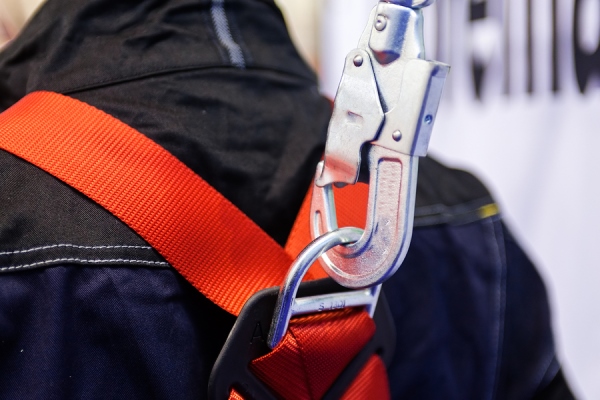Harness Inspection Guide

Personal fall protection systems such as harnesses can be a lifesaver for those who continually or occasionally work at heights. However, if it isn't in good shape, you could be putting your life in a risky situation. It is important to inspect your fall protection gear prior to every use.
Always follow the recommendations of the manufacturer of your gear for inspections and maintenance requirements. Here are some things to look for:
Harness Inspection
- Begin by holding the harness up by the D-ring. Bend the straps in an inverted "U." Watch for frayed edges, broken fibers, pulled stitches, cuts or chemical damage. Check D-rings and D-ring metal wear pads for distortion, cracks, breaks, and rough or sharp edges. The D-ring bar should be at a 90 degree angle with the long axis of the belt and should pivot freely.
- Attachments of buckles and D-rings should be given special attention. Note any unusual wear, frayed or cut fibers, or distortion of the buckles. Rivets should be tight and unmovable with fingers. Body side rivet base and outside rivets should be flat against the material. Bent rivets will fail under stress.
- Inspect frayed or broken strands. Broken webbing strands generally appear as tufts on the webbing surface. Any broken, cut or burnt stitches will be readily seen.
- Tongue Buckle: Buckle tongues should be free of distortion in shape and motion. They should overlap the buckle frame and move freely back and forth in their socket. Rollers should turn freely on the frame. Check for distortion or sharp edges.
- Friction Buckle: Inspect the buckle for distortion. The outer bar or center bars must be straight. Pay special attention to corners and attachment points of the center bar.
Lanyard Inspection
When inspecting lanyards, begin at one end and work to the opposite end. Slowly rotate the lanyard so that the entire circumference is checked. Spliced ends require particular attention.
- Snap hooks: Inspect closely for hook and eye distortion, cracks, corrosion, or pitted surfaces.
- The keeper, or latch, should seat into the nose without binding and should not be distorted or obstructed. The keeper spring should exert sufficient force to firmly close the keeper. Keeper rocks must provide the keeper from opening when the keeper closes. Closing/locking mechanism should move freely without sticking or jamming.
- While bending webbing over a piece of pipe, observe each side of the webbed lanyard. This will reveal any cuts or breaks.
- The outer portion of the shock-absorbing pack should be examined for burn holes and tears.
- Stitching on areas where the pack is sewn to the D-ring, belt or lanyard should be examined for loose strands, rips and deterioration.
